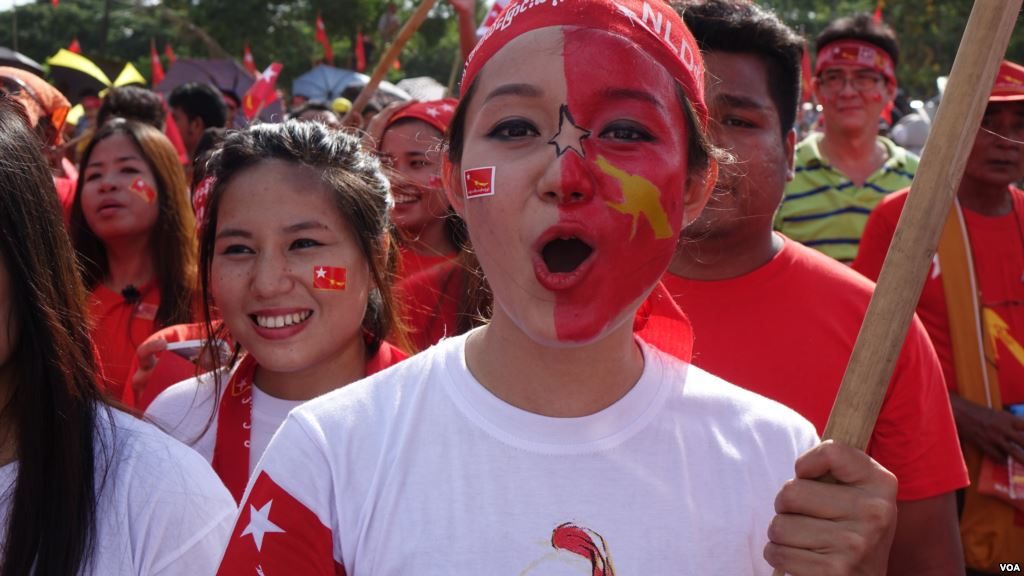This column was published in The Myanmar Times on Monday, 23 May 2016.
It is easy to be upbeat about what has happened in Myanmar in recent years. The energy on the streets is intoxicating, as tens of millions of people go about the daily business of transforming their lives.
Of course, the situation is hardly perfect but on all the key indicators it is probably better than ever, except in northern Rakhine State. The Rohingya tragedy defies the national trends and should encourage us to think much more seriously about brave and effective responses.
That situation goes to show that positive outcomes are not inevitable. Taking that lesson on board suggests that for all the good vibes around Myanmar today we need to temper our long-term expectations.
Of course we should plan for the best, but we should also be preparing for less than ideal outcomes. Gazing out toward 2025 and beyond, there are three general reasons for considering the likelihood of turbulence ahead. These are the “Three Fs” of the country’s immediate future: fragility, fealty and friction.
First, Myanmar is in a neighbourhood where democracy has shallow roots and, even today, Myanmar’s system must be judged fragile. Countries nearby tend to cluster, over the long term, at the authoritarian end of the political spectrum.
For a variety of historical, geographical, administrative and perhaps even cultural reasons it is hard to imagine Myanmar will entirely escape these regional norms.
Back in 2013, we organised an event at the Australian National University provocatively titled “What’s the chance of a coup for Myanmar?” Back then the considered judgment of the assembled experts was that the probability was reasonably high over the medium term. Even after the National League for Democracy election victory, we must still consider the prospect that things will go terribly wrong.
Second, intensely hierarchical systems of personal and institutional fealty shape almost all political and economic relations.
Even in the early months of NLD rule we can observe aspects of the old military dictatorship’s authoritarian streak. Daw Aung San Suu Kyi is apparently much more confident with her iron-fisted gerontocracy. Elements within the party’s central executive committee and within her personal circle make all the big calls.
So it is not as though the NLD is a democratic institution. On its recent track record, it performs like its fundamental purpose is to extend Daw Aung San Suu Kyi’s personal control.
It is ironic that the conduct of this group is more-or-less equivalent to the defunct State Peace and Development Council. Some things have not changed.
Third, wherever you look – with the economy, ethnicity, religion or geography – there is friction. It is conceivable that many of today’s issues are resolved, eventually, but only with an immense investment of local and foreign resources.
Very few people in Myanmar, even in the NLD, are genuinely committed to a plural, multi-religious society. The brave souls who recently marched for tolerance through the streets of Yangon end up staring down potential prosecution. Restrictions on public assembly would be laughable, if they were not so sad. But powerful people are still quite happy for Buddhist chauvinism to strangle more inclusive strands of local tradition.
Then there is the monumental question of the peace process and Daw Aung San Suu Kyi’s “21st-Century Panglong Conference”. With the right leadership and some appropriate incentives, an end to inter-ethnic conflict should be achieved. Many war-torn countries have managed it, especially when the government guarantees that the alternative to fighting is a full stomach, a good school, a local clinic and a happy family.
So, what might we expect in 2025? My guess is that splitting the difference between the past couple of decades of Thai and Bangladeshi politics helps to clarify the situation.
Such an outcome will ensure that, for a long time to come, the military will still be strong, maybe predominant. And, if the generals are threatened, a coup is possible.
No matter what happens, it is almost certain that new economic players will be harnessed up with old political elites. Those relationships will cause tension and resentment, especially when incumbency prevails. The playing field is not level and that is unlikely to change anytime soon.
Worryingly for NLD boosters, Daw Aung San Suu Kyi risks losing both her international stature and her domestic popularity if she makes too many bad calls. Such stumbles would test her instincts for liberal responses to deep-seated problems.
Finally, the Myanmar people will want to see sustained improvements in their quality of life. Can the NLD deliver? Maintaining healthy rates of economic growth and getting a greater share of national wealth to people who have historically missed out will not be easy.
Given the fragility of today’s system, the insistence on fealty to established hierarchies and the potential for friction to cause real heat, Myanmar’s biggest changes are probably still to come.
This article is an edited version of remarks delivered at a seminar in Canberra on 11 May 2016, sponsored by the Australian Institute of International Affairs and the Australian National University’s Myanmar Research Centre.
 Facebook
Facebook  Twitter
Twitter  Soundcloud
Soundcloud  Youtube
Youtube  Rss
Rss 